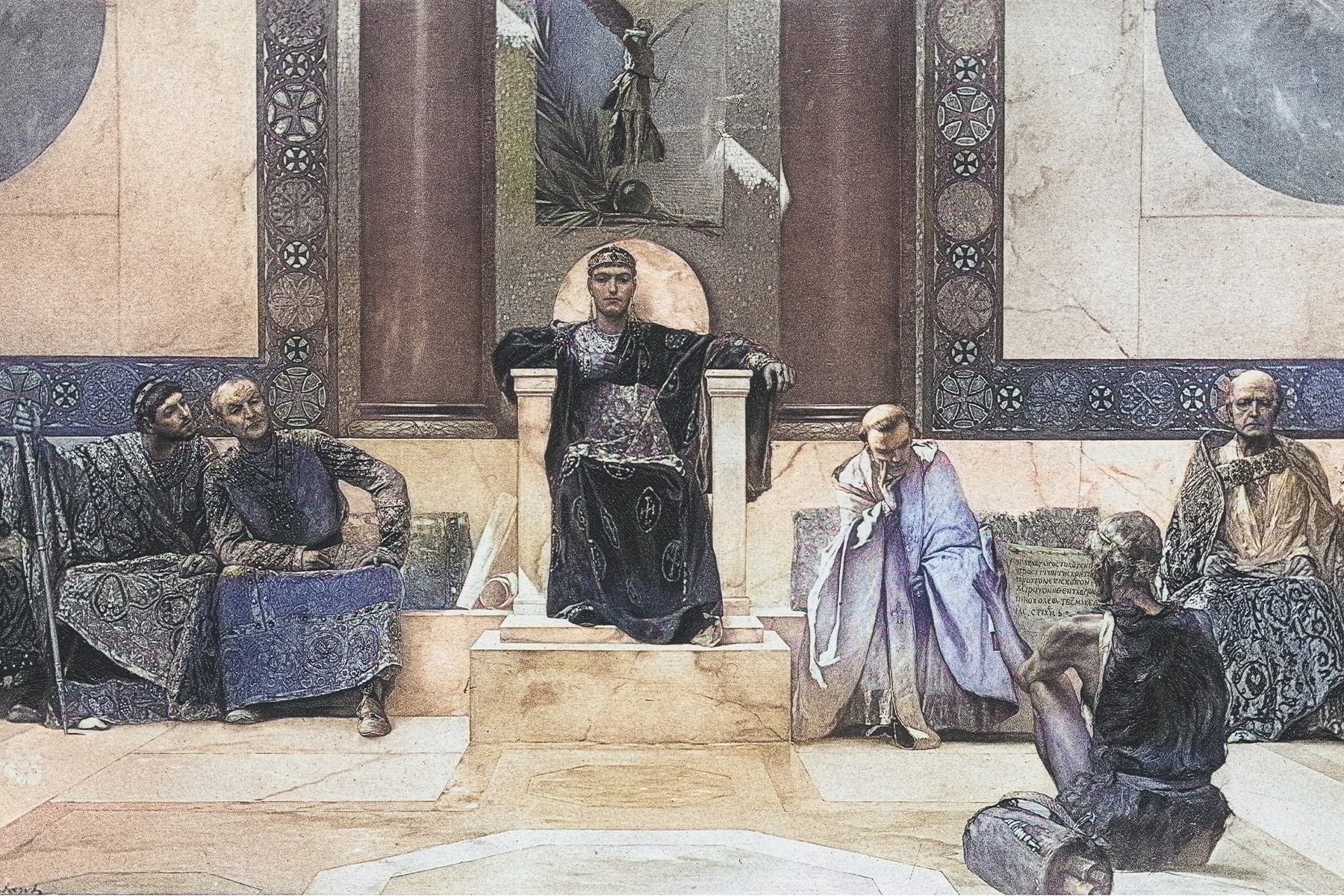
Politics & Society
Footy, history and a changing Australia

All societies make agreements, so contract law is the perfect site to discover intercultural, cross-generational notions of justice
Published 15 December 2023
We’re all searching for the same thing: fair principles to guide us.
Say you buy grapes to make wine, but the seller fails to deliver the grapes. Everyone would agree you should get back the purchase price of the grapes, but should you also get the loss of profit from the wine you intended to make?
Many societies share an idea that when we ask someone to pay for another’s loss, there must be fair and just limits to liability, a principle known to lawyers as ‘remoteness’. In Australian contract law, that test is whether a loss was in the ‘contemplation of the parties’.

People who enter into contracts know it is impossible to know the future and to know what all outcomes of a contract will be. The ‘contemplation of the parties’ test was rooted in the idea of contract as a voluntary undertaking arising from mutual consent – which meant the law had to fairly consider both sides.
But where did Australia’s test for fair and just liability come from?
I wouldn’t have guessed that Australia’s contract law reflects the experiences of so many histories and cultures – and a shared principle of justice.
When my colleague Mario Ricca, Professor at the University of Rome, asked me to research the comparative law of contract damages, I didn’t realise I was about to embark on a historical journey through Ancient Rome, Ancient Greece, Holland, France, England, India, Malaysia and Australia.

Politics & Society
Footy, history and a changing Australia
My research began in Ancient Rome, the birthplace of so many European legal principles.
Roman law reflected an intensely commercial society: they mass-produced consumer goods and prioritised trade. In the second and third century CE, under Roman law, the grape buyer would get back what he had paid for the grapes and get the loss of profit from the wine he was going to make.
However, if a buyer sued a seller to recover damages for a failure to deliver wheat, say because his slaves starved, the price of the slaves killed by starvation was not recoverable.
Their rules were complicated, and different rules applied to different kinds of contracts.
So, Eastern Roman emperor Justinian reverted to a general rule in his attempt to codify Roman law in the sixth century.
This general rule was called the lex Sancimus (named for the first word of the provision, Sancimus, which means “we sanction”), and stipulated where the value of the property was ‘certain’, like a lease or a contract of sale, claimed damages were not to exceed double the value of the property, even if the real loss was greater.
Therefore, under later Roman law, you couldn’t get back more than twice the value of the grapes.
But where the value was ‘uncertain’ (though they did not specify what ‘uncertain’ meant) the real loss could be awarded.

The 13th Century theologian St Thomas Aquinas was bothered by the Roman’s arbitrary nature of the division between ‘certain’ contracts and ‘uncertain’.
Taking note of the teachings of Aristotle, Aquinas decided the law with regard to ‘certain’ property could only be justified if one accepted that human law does not always give a remedy for all losses, but the rule in relation to ‘uncertain’ property was corrective.
Hugo Grotius, a Dutch Protestant known as the forefather of modern International Law, encouraged scholars to accept that consent was essential to why we compensate for breach of contract in the way Aquinas had suggested.
But it was the quirky sixteenth-century French jurist Molineaus (Charles Dumoulin) who came up with the ‘contemplation of the parties’ test familiar to Australian lawyers now, and an eighteenth-century French jurist, Robert Joseph Pothier, who untethered these concepts from Roman law, allowing them to be adopted by other civilisations.

Politics & Society
Rebuilding Victoria’s forgotten integrity institution
The French Code Civil was finalised in 1804, and it adopted Pothier’s ideas. Many other nations across the world joined the French in adopting a Civil Code, creating a division between civilian jurisdictions (those that have a code) and common law jurisdictions (those that follow the English practice of using judge-made laws and statutes).
What then of the English and their ‘common law’?
Although contract is often regarded as a pillar of common law, curiously, it did not exist in a modern form in England until the nineteenth century. The Industrial Revolution spurred the development of principles regarding loss, to keep the cogs and wheels of commerce turning, both literally and figuratively.
Colonial Australia adopted the English common law system so when a contractual dispute arose in 1834, it was difficult for the Supreme Court of New South Wales to know the limits of liability, unlike the French, who now had a Code.
When a Mr Girard promised to set up Captain Biddulph’s steam engine for his flour mill in Cockle Bay in Sydney, he failed to complete the steam engine on time. Captain Biddulph took two actions. First, he sued Mr Girard for the loss of profits from the failure of his mill to work; but secondly, he horse-whipped Mr Girard, and then pretended he had not.

The Supreme Court of New South Wales did not have any clear principles to instruct the jury but came to a decision that Captain Biddulph should be confined to “reasonable and moderate damages”, not the £2000 he requested.
In the event, Captain Biddulph obtained £83 in damages from Mr Girard, reflecting his loss of profits; but he was obliged to pay Mr Girard £25 for the horse-whipping.
It was a flour mill again that provided the solution to the problem, when, in 1854, the English Court of Exchequer adopted the remoteness principles familiar to us today. The Court adopted the test of contemplation of the parties, drawing on a translation of Pothier, French law and the suggestions of American scholars.
In this case, Baxendale, a carrier, was late returning a crankshaft to Hadley, who sued Baxendale for loss of profits. The court decided that these losses couldn’t have been contemplated.

Politics & Society
Eradicating modern slavery in Australia
These rules were imported into Australian law, but they also made their way to India and Malaya.
The British East India Company had tried to codify laws for governing disputes in India using laws described by eleven Hindu pandits, but after the Indian Rebellion in 1857 against British East India Company rule, the British ‘Raj’ took over, and gave up on adapting local laws.
Instead, it produced a legislative ‘code’ based on English common law, culminating in the Indian Contract Act of 1872.
Section 73 of the Indian Contract Act clearly reflects the influence of Hadley v Baxendale. But Indian law also influenced British law. The British later adapted the Indian Contract Act for use in the Malayan territories.
These laws persist in India, Pakistan, Bangladesh and Malaysia to this very day, despite the disappearance of British colonial rule.
These traces of history show we have all been searching for principles to guide us in a ‘just’ application of the law.
All societies make agreements, and all societies have situations where people fail to fulfil the bargains they have made. Contract law is therefore the perfect site for intercultural notions of justice to be discovered, and to be passed on through generations.
Banner: Getty Images